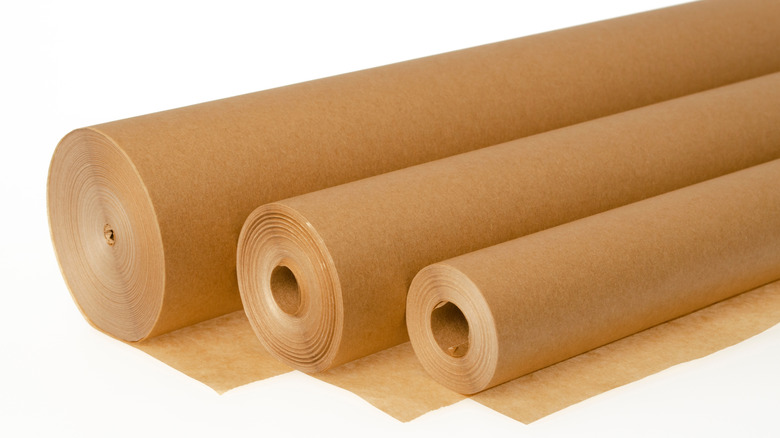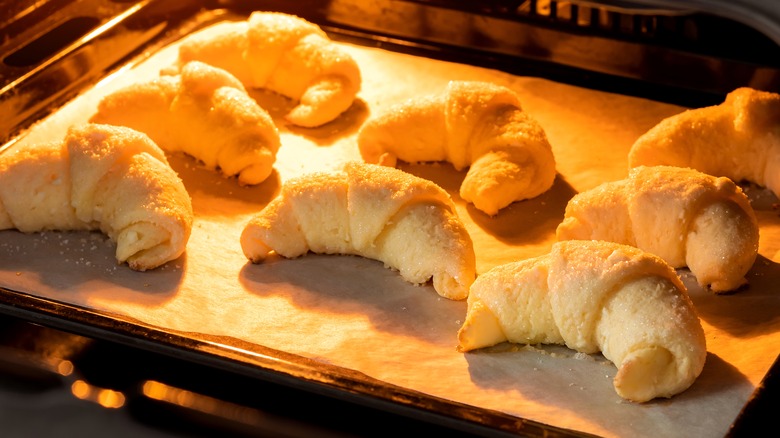Read This Before Reusing Parchment Paper
Parchment paper, though not as essential as chopping boards and chef's knives, is one of the handiest cooking tools to have in the kitchen. The fact that it's reusable makes it an even more powerful implement (via Substitute Cooking).
Martha Stewart lauds parchment paper for its versatility and its function in keeping the cleanup duties to a minimum after cooking. "[These] inexpensive papers can be used for a range of tasks, from pouring ingredients to steaming fish," she says on her website. In fact, Substitute Cooking guarantees, "It is perfectly safe and totally alright to reuse parchment paper."
Reusing parchment paper is an aftermarket hack, per King Arthur Baking Company. As such, there is no set number of times you can bake with it. You can reuse it as long as it stays intact, has no odors, and is clean. Once the paper starts darkening due to heat, it will have exceeded its usefulness.
The important aspects of parchment paper
For starters, parchment paper is not to be confused with wax paper, per Eating Well. While both are effective for many of the same functions, parchment paper can withstand temperatures up to 450°F. Wax paper, on the other hand, is heat intolerant. However, it's only exposed to heat when used to line the bottom of a cake pan. In this case, the baking mixture is soaking up the heat, which keeps the wax from dissolving.
An important factor when choosing parchment paper is whether or not it's bleached. If it is bleached, it poses a health risk, according to Recipe Marker. Bleached parchment paper contains chlorine and could contain other harmful chemicals, such as Quilon. The easiest way to tell the difference is by the color of the paper, per The Spruce Eats. White parchment paper is chemically processed, and brown is unbleached.
Parchment paper has a silicon layer, making it waterproof, all while giving it a nonstick quality (per King Arthur Baking). This attribute allows the user to wipe it down after use. Unlike standard paper, the downside of this glossy layer is that it makes it unfit for recycling after use and is non-compostable. Therefore, the reuse of parchment even more important for environmental reasons.

